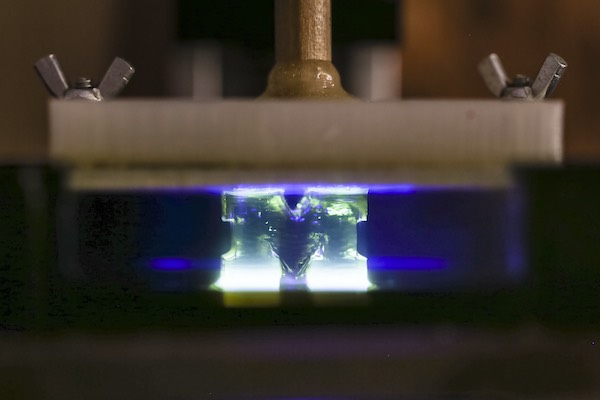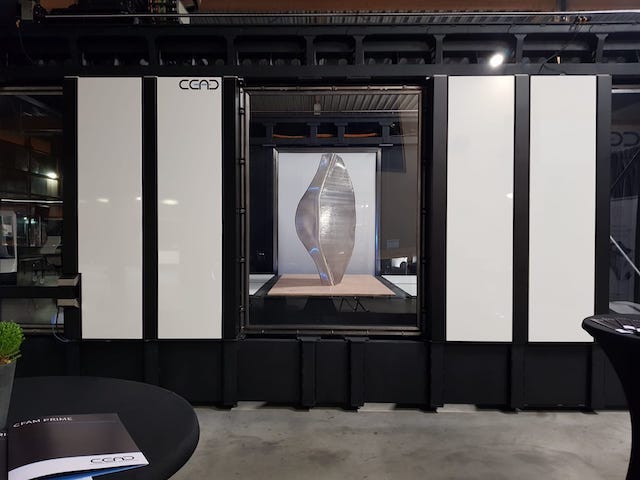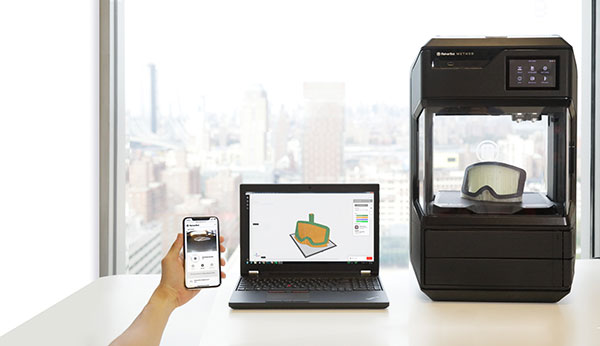Editors’ Picks





Scale and performance are two of the primary speed bumps in the way of using stereolithography (SLA) 3D printing techniques as a viable full-scale production method. But a research team at the University of Michigan is aiming to change that dynamic with a novel take it claims can print up to 100 times faster than conventional 3D printing processes. See Also UC Berkeley Demonstrates ‘All at Once’ 3D Printing While existing SLA methods and other forms of conventional 3D printing lends themselves to prototyping applications, they fall short as a substitute for injection molding practices for production runs with 10,000…

Want to get more mileage out of autonomous vehicle testing? Mcity, which bills itself as one largest test sites for driverless cars, is advocating for a new approach that combines augmented reality (AR) and real-world driving scenarios as a highly effective roadmap for the rigorous testing of autonomous vehicles, according to a white paper released late last year. The paper, penned by Henry Liu Ph.D., professor of Civil and Environmental Engineering at University of Michigan’s College of Engineering, and Yiheng Feng, Ph.D., assistant research scientist at the U-M Transportation Research Institute, makes the case for a hybrid test process that…

One by one, the barriers to additive manufacturing (AM) are being knocked down as a continuing spate of offerings address cost, performance and ease-of-use constraints that have relegated the technology to a supporting role, primarily for prototyping and limited production-run applications. Now, CEAD Group is doing its part to advance the AM value proposition with the official launch of its CFAM Prime 3D printer, which brings continuous fiber printing for composite applications to an industrial scale. The company, which was formed out of Leapfrog, another Dutch company specializing in desktop 3D printers, is targeting its printer at companies in the…

After making its mark as one of the catalysts behind the rise of the hobbyist 3D printing market, MakerBot, now owned by Stratasys, is looking to blaze new ground with its latest offering by bridging the gap between desktop and industrial 3D printing. The newly launched Method, touted by the firm as the first performance 3D printer, is a wholly new platform, designed from the ground up to meld industrial 3D printing capabilities like dimensional accuracy and high-speed output with the user experience and reasonable price points that defined early MakerBot models. Method, priced at $6,499, is aimed at professional…

Metal 3D printing has enjoyed quite a reel of highlights these last few years, from the introduction of new materials to price points that make the once exclusive technology more accessible for mainstream use cases. Now HP is doing its part to champion the paradigm with the release of the HP Metal Jet, a platform that the company says addresses longstanding limitations and positions the technology as a cost-effective alternative for low-cost, mass production. Designed for high-volume manufacturing of production-grade metal parts, HP is eyeing auto, industrial and medical applications with the Metal Jet, which claims up to a 50x…

As composites take hold across the aviation industry as a way to lightweight aircraft and other structures, a NASA-led consortium is exploring ways to shorten the cycle for material development and certification—the goal being to boost competitive advantage among US manufacturers. The Advanced Composites Consortium (ACC), which includes 13 members, including aerospace manufacturers, university partners, and more recently a single software provider, conducts research focused on the accurate prediction of the strength and life of composite structures, rapid inspection of composites, and efficient development of manufacturing processes. Collier Research, maker of HyperSizer optimization software, is the sole software member, committed…

Any lingering doubts that the government wholeheartedly backs the development of autonomous vehicles was put to rest this week with the official announcement of a set of policies that touched on guidelines for vehicle performance as well as safety concerns. Jeffrey Zients, director of the National Economic Council, and Anthony Foxx, secretary of the U.S. Department of Transportation, released the 116-page Federal Automated Vehicles Policy along with a 15-point safety standard intended to encourage and aid in the design and development of autonomous vehicles. The agencies also urged manufacturers of the new generation of driverless vehicles to be transparent in…



